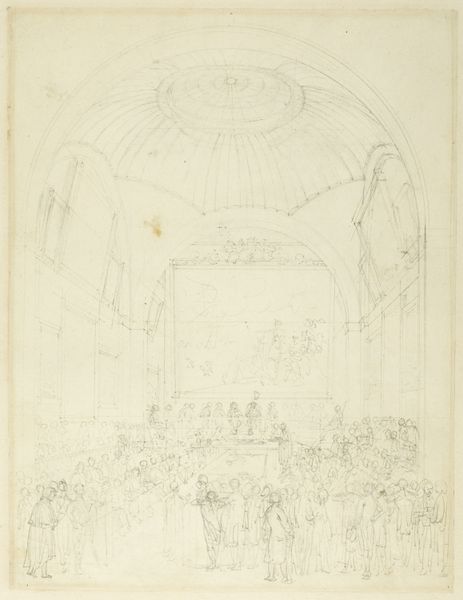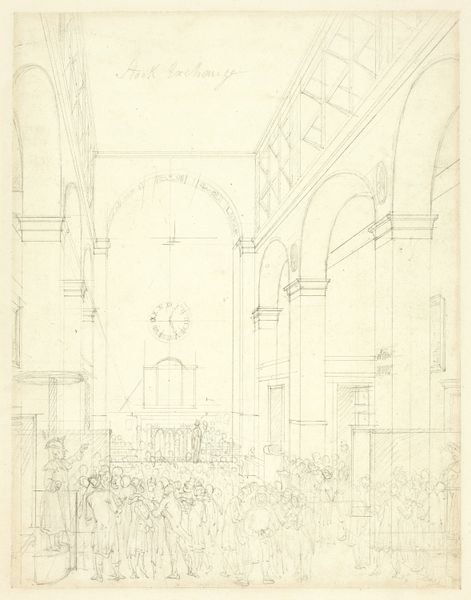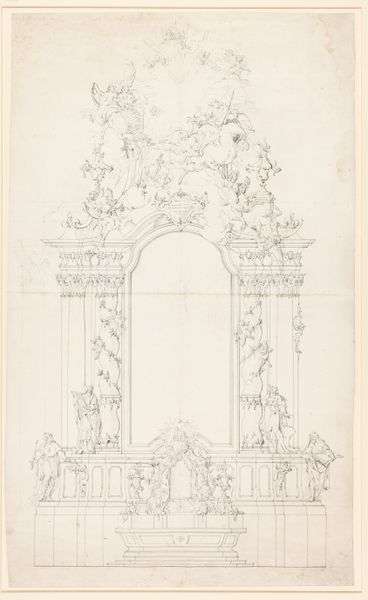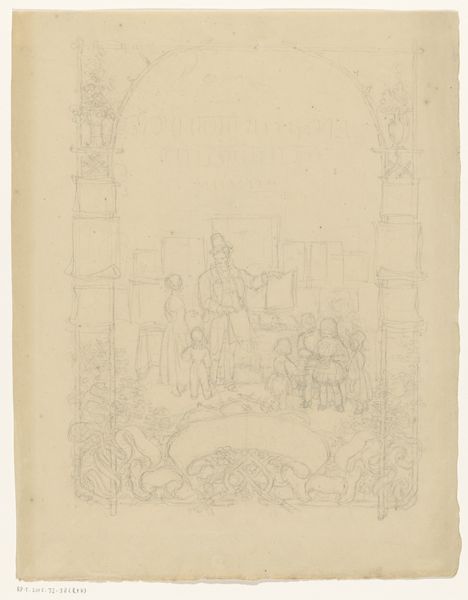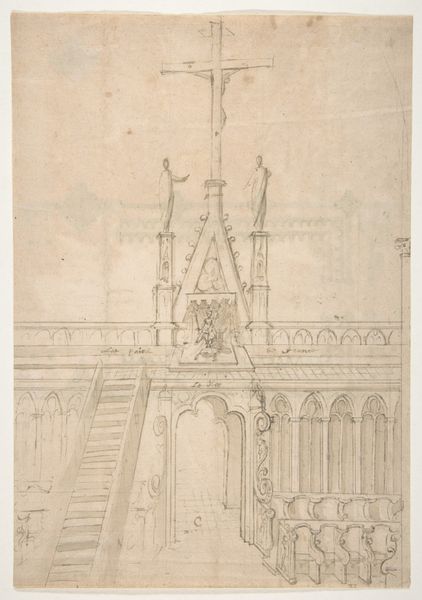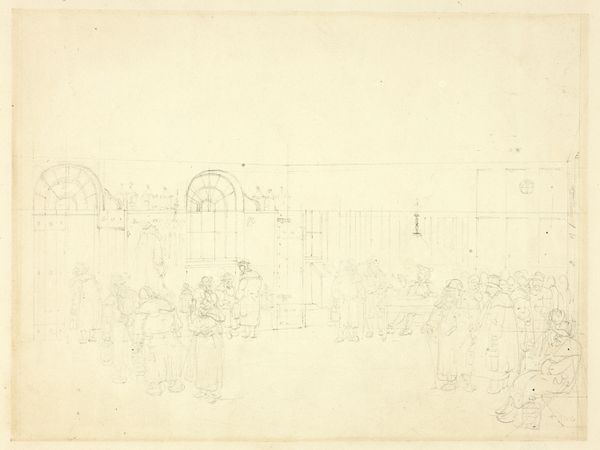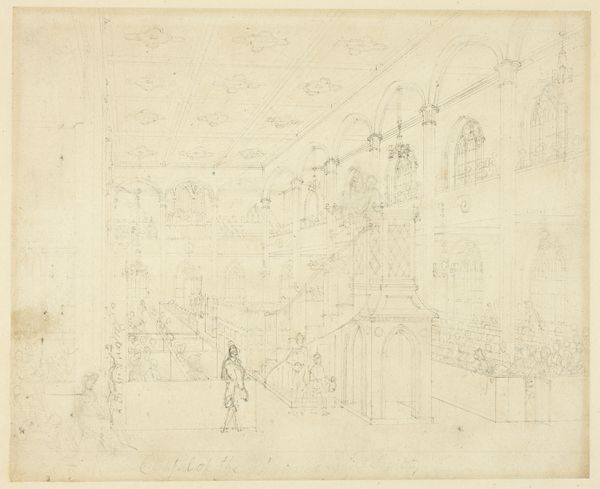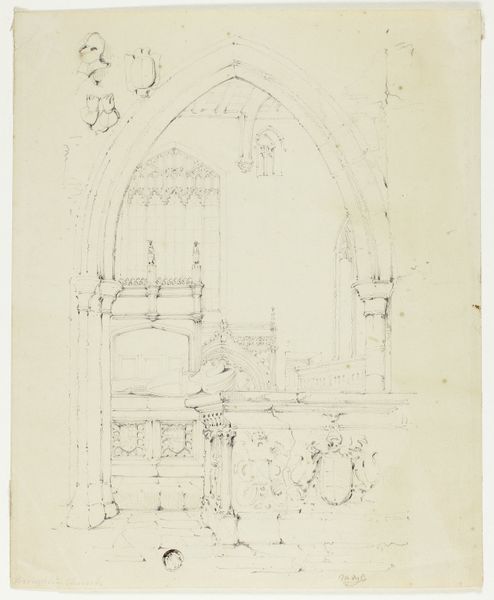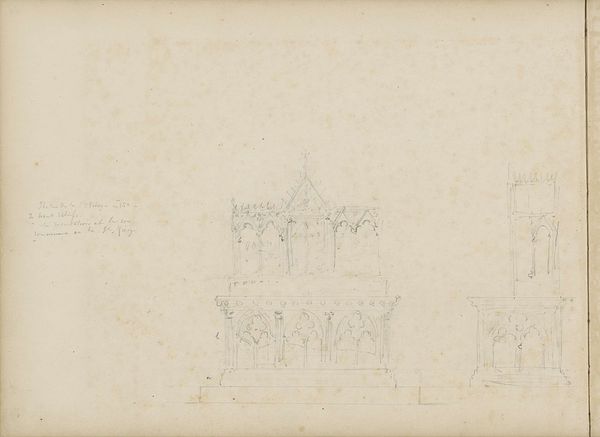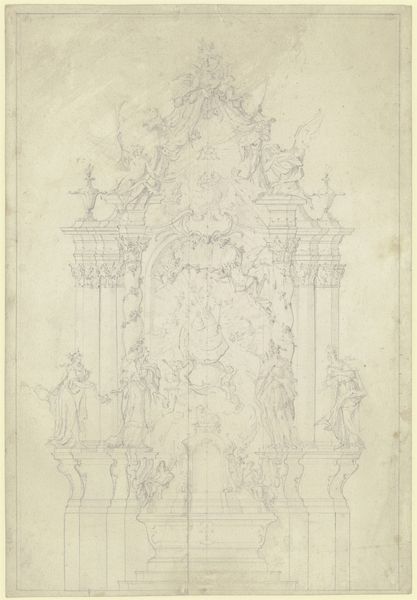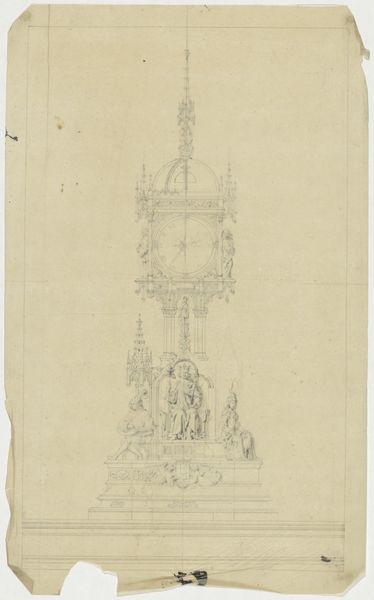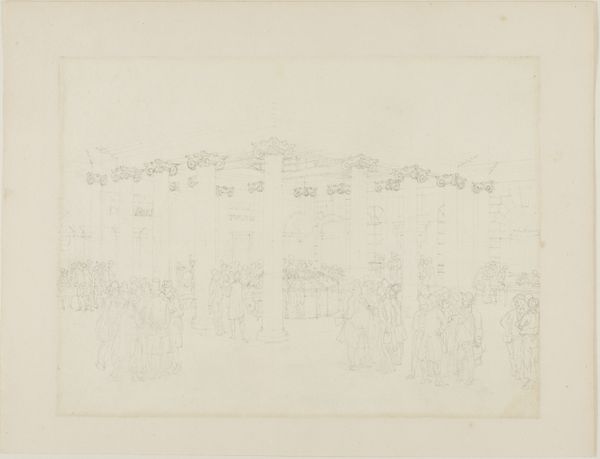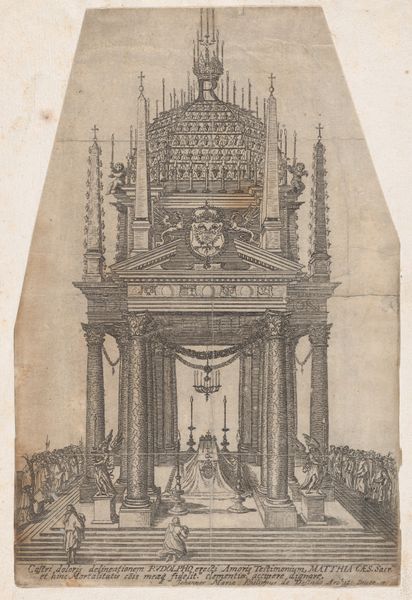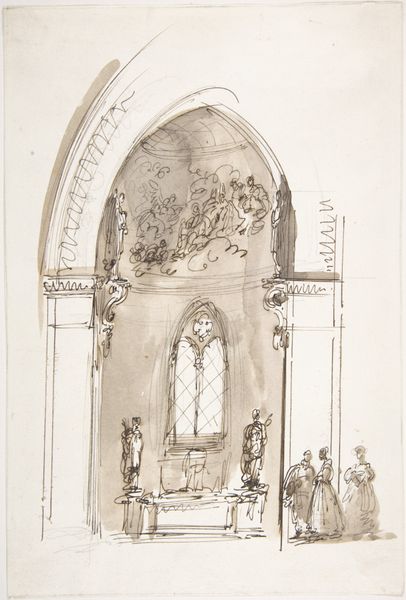
drawing, print, paper, ink, pencil, graphite, pen
#
drawing
# print
#
landscape
#
paper
#
ink
#
romanticism
#
pencil
#
pen work
#
graphite
#
pen
#
cityscape
#
genre-painting
#
history-painting
Dimensions: 257 × 198 mm
Copyright: Public Domain
Editor: Here we have Augustus Charles Pugin's "Study for Vauxhall Garden," created around 1809, using pencil, pen, ink, and graphite on paper. It's interesting to see the light sketch lines that give it a ghostly quality. What does this drawing reveal to you about the social or cultural context of its time? Curator: Well, Vauxhall Gardens were incredibly significant as a public space. Drawings like these acted as vital visual documentation of evolving social rituals and spaces of leisure. Do you notice anything particular about how the figures are arranged? Editor: They seem almost segregated by class – a mix, but still distinct groupings. Is Pugin subtly commenting on social hierarchy here? Curator: Precisely! Pugin presents Vauxhall as a curated social event rather than a space of genuine integration. The image becomes part of a larger debate about social order and who gets to participate in "polite" society. He also documented architectural designs of the space and later created illustrations that became popular and perpetuated ideas about the park. Editor: That’s fascinating, I didn’t consider how illustrative documentation could also be persuasive imagery in itself! Are there other ways these kind of gardens and depictions of them had social implications at the time? Curator: Think about how public spaces could be used as stages for displays of wealth and power, how architecture influenced human interactions. Pugin’s study offers a lens through which to examine the intertwined relationship between space, power, and representation during a time of social transformation. Editor: That adds a whole new layer to how I see this now, considering not just what is shown, but the cultural dialogue surrounding it. Curator: Exactly. By examining it through that perspective, we learn more about both the art and its audience.
Comments
No comments
Be the first to comment and join the conversation on the ultimate creative platform.
